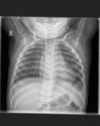Pediatric Trauma Care in Low Resource Settings: Challenges, Opportunities, and Solutions
- PMID: 29915778
- PMCID: PMC5994692
- DOI: 10.3389/fped.2018.00155
Pediatric Trauma Care in Low Resource Settings: Challenges, Opportunities, and Solutions
Abstract
Trauma constitutes a significant cause of death and disability globally. The vast majority -about 95%, of the 5.8 million deaths each year, occur in low-and-middle-income countries (LMICs) 3-6. This includes almost 1 million children. The resource-adapted introduction of trauma care protocols, regionalized care and the growth specialized centers for trauma care within each LMIC are key to improved outcomes and the lowering of trauma-related morbidity and mortality globally. Resource limitations in LMICs make it necessary to develop injury prevention strategies and optimize the use of locally available resources when injury prevention measures fail. This will lead to the achievement of the best possible outcomes for critically ill and injured children. A commitment by the governments in LMICs working alone or in collaboration with international non-governmental organizations (NGOs) to provide adequate healthcare to their citizens is also crucial to improved survival after major trauma. The increase in global conflicts also has significantly deleterious effects on children, and governments and international organizations like the United Nations have a significant role to play in reducing these. This review details the evaluation and management of traumatic injuries in pediatric patients and gives some recommendations for improvements to trauma care in LMICs.
Keywords: child abuse; disasters; emergency management; injury prevention; low- and middle-income countries; pediatrics; surgical management; trauma.
Figures







References
Publication types
Grants and funding
LinkOut - more resources
Full Text Sources
Other Literature Sources
Medical

